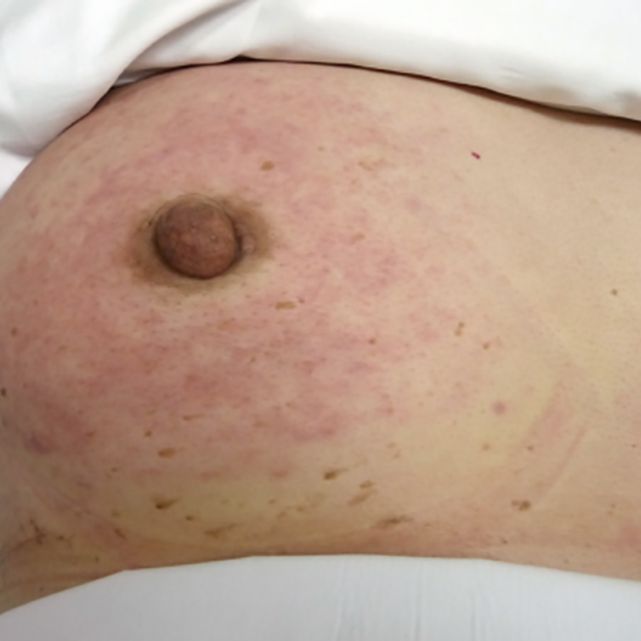
A cancer that forms in the cells of the breasts.
Breast cancer can occur in women and rarely in men.
Symptoms of breast cancer include a lump in the breast, bloody discharge from the nipple and changes in the shape or texture of the nipple or breast.
Its treatment depends on the stage of cancer. It may consist of chemotherapy, radiation, hormone therapy and surgery.
Breast cancer most often begins with cells in the milk-producing ducts (invasive ductal carcinoma). Breast cancer may also begin in the glandular tissue called lobules (invasive lobular carcinoma) or in other cells or tissue within the breast.
a lump or swelling in either of your armpits. a change in the look or feel of your skin, such as puckering or dimpling, a rash or redness. a rash (like eczema), crusting, scaly or itchy skin or redness on or around your nipple. a change in the appearance of your nipple, such as becoming sunken into your breast.
There is no "natural" cure for breast cancer. Medical treatments are necessary to remove, shrink, or slow the growth of tumors. That said, you may use certain complementary therapies and lifestyle changes alongside standard medical treatments to help: control symptoms of breast cancer.
The overall 5-year relative survival rate for breast cancer is 90%. This means 90 out of 100 women are alive 5 years after they've been diagnosed with breast cancer. The 10-year breast cancer relative survival rate is 84% (84 out of 100 women are alive after 10 years).
Younger women generally do not consider themselves to be at risk for breast cancer. However, breast cancer can strike at any age: 5% of breast cancer cases occur in women under 40 years of age.
Just being a woman is the biggest risk factor for developing breast cancer. There are about 266,120 new cases of invasive breast cancer and 63,960 cases of non-invasive breast cancer this year in American women.
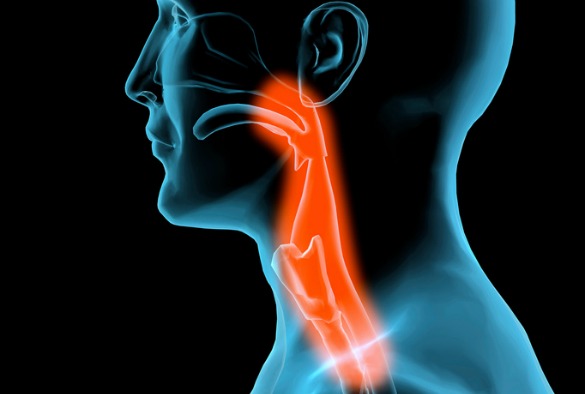
A group of cancers of the mouth, sinuses, nose or throat.
Smoking is a significant risk factor.
Symptoms can occur in mouth, sinuses, nose or throat and include a sore or lump that doesn't heal, a persistent sore throat, trouble swallowing and changes in the voice.
Treatments include surgery, radiation and chemotherapy.
The warning signs of head and neck cancer include :
1. Painless white patch or red patch in the mouth.
2. Hoarseness or change in voice.
3. Sore throat.
4. Painless lump in the mouth or neck.
5. Difficulty chewing, swallowing or breathing.
6. Frequent nosebleed, particularly on one side of the nose.
The most common type of head and neck cancer is squamous cell carcinoma (squamous cell cancer). About 9 out of 10 head and neck cancers (90%) start in squamous cells. Squamous cells line the mouth, nose and throat.
How head and neck cancer is treated. Many cancers of the head and neck can be cured, especially if they are found early. Although eliminating the cancer is the primary goal of treatment, preserving the function of the nearby nerves, organs, and tissues is also very important.
For all head and neck cancer subtypes, one-year survival falls between 1 and 5 years after diagnosis, though the gradient of the fall varies between subtypes. For most head and neck cancer subtypes, one-year survival falls between 5 and 10 years after diagnosis.
Head and neck cancer symptoms may include a lump in the neck or a sore in the mouth or the throat that does not heal and may be painful, a sore throat that does not go away, difficulty in swallowing, and a change or hoarseness in the voice. These symptoms may also be caused by other, less serious conditions.
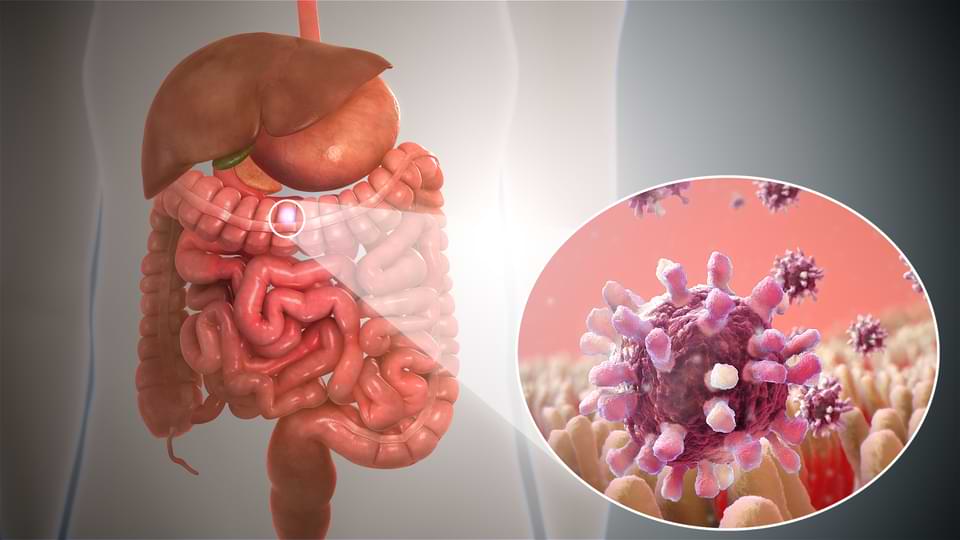
Gastric cancer is a disease in which malignant (cancer) cells form in the lining of the stomach. Age, diet, and stomach disease can affect the risk of developing gastric cancer. Symptoms of gastric cancer include indigestion and stomach discomfort or pain.
The most common symptoms include:
1. Pain or discomfort in the abdomen.
2. Nausea and vomiting.
3. Loss of appetite.
4. Fatigue or weakness.
5. Bleeding (vomiting blood or passing blood in stools)
6. Weight loss.
7. Early satiety (cannot eat a complete meal because of a "full feeling")
If the cancer is diagnosed and treated before it has spread outside the stomach, the 5-year survival rate is 70%. If the cancer has spread to surrounding tissues or organs and/or the regional lymph nodes, the 5-year survival rate is 32%.
Factors that increase the risk of stomach cancer include:
1. Gastroesophageal reflux disease.
2. Obesity.
3. A diet high in salty and smoked foods.
4. A diet low in fruits and vegetables.
5. Family history of stomach cancer.
6. Infection with Helicobacter pylori.
7. Long-term stomach inflammation (gastritis)
8. Smoking.
In a review of over 18,000 patients, the most common presenting symptoms included weight loss and abdominal pain. Epigastric fullness, nausea, loss of appetite, dyspepsia, and mild gastric discomfort may also occur.
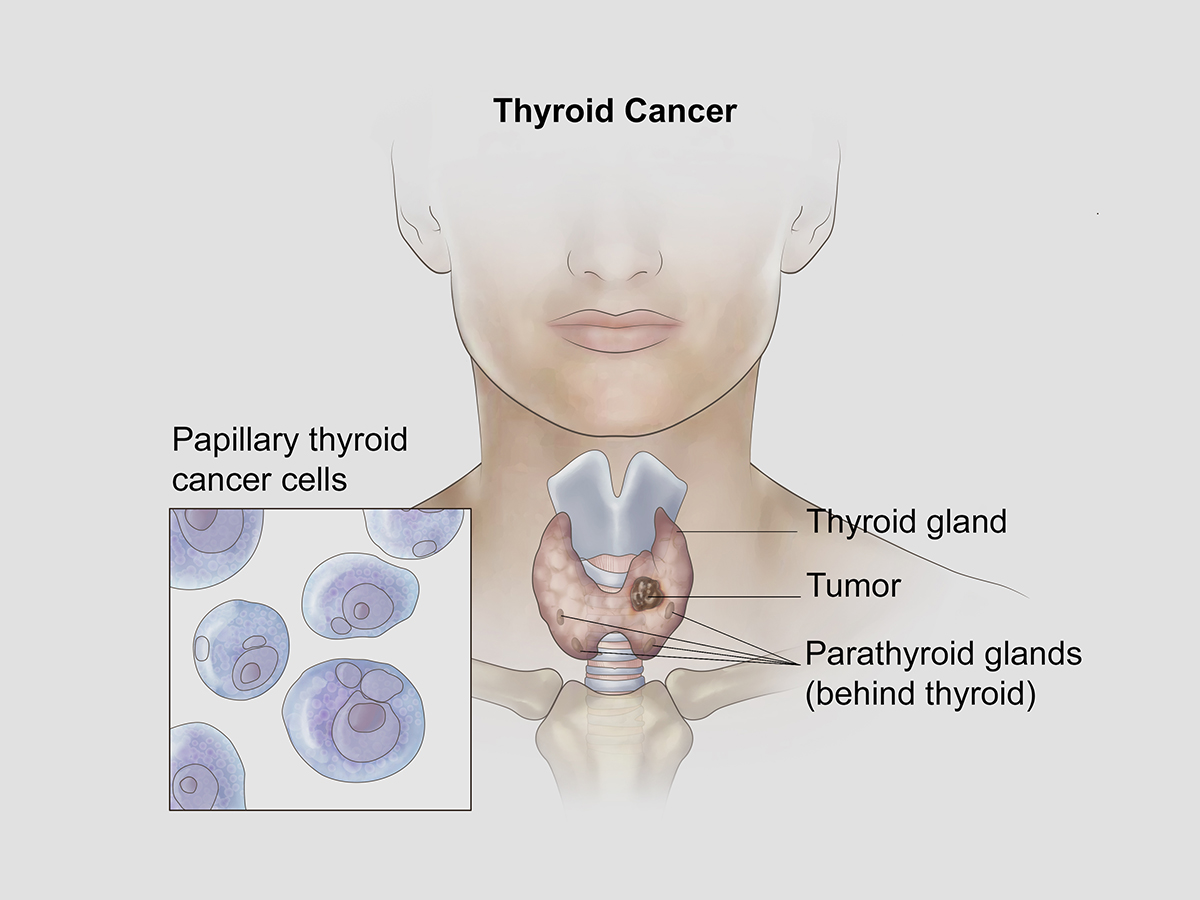
A cancer of the thyroid, the butterfly-shaped gland at the base of the neck. The cause of thyroid cancer is poorly understood, but may involve a combination of genetic and environmental factors. Some people have no symptoms. Others may notice a lump in the neck. Treatments, which are usually successful, include surgery, hormone therapy, radioactive iodine, radiation and in some cases chemotherapy.
Signs and Symptoms of Thyroid Cancer :
1. A lump in the neck, sometimes growing quickly.
2. Swelling in the neck.
3. Pain in the front of the neck, sometimes going up to the ears.
4. Hoarseness or other voice changes that do not go away.
5. Trouble swallowing.
6. Trouble breathing.
7. A constant cough that is not due to a cold.
Thyroid cancer is linked with a number of inherited conditions (described in Thyroid cancer risk factors), but the exact cause of most thyroid cancers is not yet known. Certain changes in a person's DNA can cause thyroid cells to become cancerous.
Most thyroid cancers can be cured, especially if they have not spread to distant parts of the body. If the cancer can't be cured, the goal of treatment may be to remove or destroy as much of the cancer as possible and to keep it from growing, spreading, or returning for as long as possible.
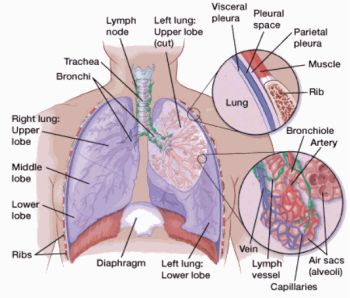
A cancer that begins in the lungs and most often occurs in people who smoke.
Two major types of lung cancer are non-small cell lung cancer and small cell lung cancer. Causes of lung cancer include smoking, second-hand smoke, exposure to certain toxins and family history.
Symptoms include a cough (often with blood), chest pain, wheezing and weight loss. These symptoms often don't appear until the cancer is advanced.
Treatments vary but may include surgery, chemotherapy, radiation therapy, targeted drug therapy and immunotherapy.
The most common symptoms of lung cancer are:
1. A cough that does not go away or gets worse.
2. Coughing up blood or rust-colored sputum (spit or phlegm)
3. Chest pain that is often worse with deep breathing, coughing, or laughing.
4. Hoarseness.
5. Loss of appetite.
6. Unexplained weight loss.
7. Shortness of breath.
8. Feeling tired or weak.
The majority of lung cancer cases can be traced to cigarette smoking. Specifically, the DNA changes that lead to the development of lung cancer occur after harmful chemicals-such as those contained in tobacco smoke-are breathed in. The inhaled carcinogens then damage cells in the respiratory system.
The most common types of lung cancer include lung nodules, non-small cell lung cancer, small cell lung cancer and mesothelioma. Rare lung cancers often don't originate in the lung. Rare lung cancers vary according to size, recommended treatment options and rate of metastasis.
Treatments. With early intervention, stage I lung cancer can be highly curable. Usually, your doctor will want to remove the cancer with surgery. You also may need chemo or radiation therapy if traces of cancer remain or are likely to stay.